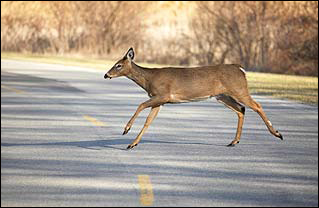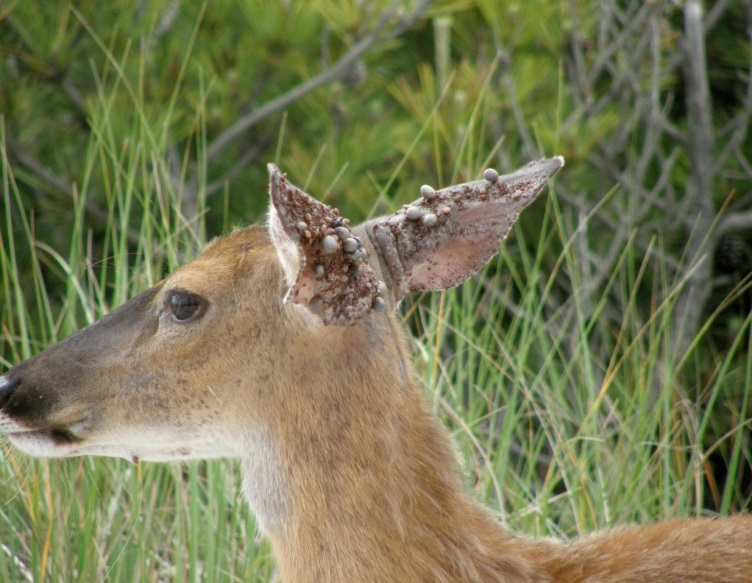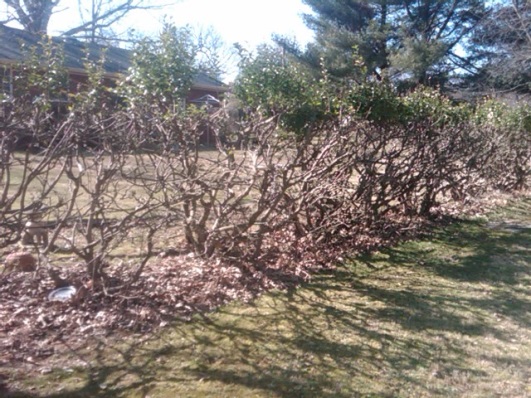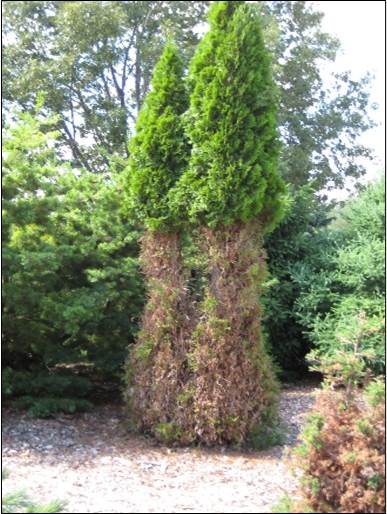White-tailed deer (Odocoileus virginianus) are the most abundant and best-known large herbivore in the United States and are an important and valued part of Fairfax County's natural heritage.
Deer populations have the potential for rapid growth and may double in size annually under optimum conditions. Their adaptability combined with plentiful resources for food and refuge provided by human-modified environments allows deer to thrive in urban and suburban areas as well as wilderness.
There are natural limits to the number of deer that the habitat can support over time without damage.A healthy ecosystem can support 15 - 20 deer/ square mile without damage to the environment. Estimated deer density at many sites in Fairfax County is a minimum of 40 - 100 deer/ square mile.
Increased habitat modification, loss of natural habitat, reduced hunting pressures and a loss of natural large predators have contributed to an overabundant deer population. If left unregulated, deer can become abundant enough to conflict with human interests.The deer population in Fairfax County has grown to a level that poses safety and health hazards to our communities, and is not sustainable by the environment over time. An integrated deer management program is necessary for long-term reduction of deer-related conflicts in Fairfax County.
Public Safety
-
Virginia is considered a high-risk state for deer-vehicle collisions, ranking 13th in the nation for the likelihood of drivers being involved in a collision with a deer.
-
The likelihood of having an insurance claim involving a deer was 1 in 72 for Virginia drivers during 2022-2023.


Public Health
Dense deer populations are inferred to be one of the principal factors in the increase of ticks in many urban environments leading to public concern over disease transmission.
White-tailed deer are considered the preferred or definitive host for adult black-legged ticks (Ixodes scapularis), the primary vector of Lyme disease.
Adult ticks feed and mate primarily on deer; however, deer are not competent reservoir hosts for the Lyme disease bacterial agent (Borrelia burgdorferi).
Black-legged ticks use a variety of mammalian reservoirs of the disease-causing bacterium, including white-footed mice, chipmunks, and songbirds, among other species.
The presence of deer has been correlated with tick populations to variable degrees and some studies have found that reduction of deer populations to very low thresholds may reduce tick abundance; however, the relationship between deer populations and incidence of Lyme disease remains unclear.
Information on tick bite prevention and Lyme disease is provided by the Fairfax County Health Department, Disease Carrying Insects Program.
According to Fairfax County Health Department, almost 200 cases of Lyme disease are now reported in the county annually.


Environmental Impact
- A single adult deer consumes 5 to 7 lbs of plant matter in one day. Over 1 ton of vegetation is consumed by one deer in one year.
- Irreversible damage to native plant life, forest understory and woodland habitat
- Loss of biodiversity and fewer species supported in the ecosystem
- Depleted natural food sources (leaves, stems, buds, flowers, fruits and fungi)
- Increased reliance on supplementary food sources and non-native plants
- Herd health decreases as more deer must compete for food and other resources



Deer Damage (Over Browse)